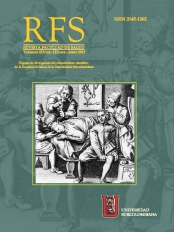Neurological compromise in children suffering from dengue at Hospital Universitario de Neiva
##plugins.themes.bootstrap3.article.main##
Introduction. Dengue is an arthropod-borne infection most important in the world. There is evidence of progressive increase of atypical manifestations of the disease, including neurological compromise. Objective. To determine the presence of dengue virus (VD) in a cohort of hospitalized patients with neurological manifestations between March 1, 2011 and October 31, 2012. Materials and methods. Cohort, descriptive, prospective study to determine neurological manifestations, both primary and secondary, of dengue in children under 15 years old hospitalized in the pediatric ward of the University Hospital in Neiva. It was assessed specific IgM, IgG against VD in serum and cerebrospinal fluid and a virological typification analysis was carried out. Results. Twelve (38.7%) out of 31 children with neurological symptoms were admitted in the study and were positive for VD; 83.3% primary dengue and 16.6% with secondary dengue. 58.3% are children under 1 year of age, no differences in gender distribution were observed. The predominant neurological manifestations are febrile seizures followed by encephalitis. The main causative agent found is DEN 1. The imaging findings are not specific to the virus that causes damage of the CNS. Conclusions. In endemic areas DV infection must be ruled out in patients with fever and neurological manifestations. The patients'prognosis is favorable, the damage is self-limited and recovery is complete without sequelae.
Downloads
##plugins.themes.bootstrap3.article.details##
World Health Organization and the Special Programme for Research and Training in Tropical Diseases, Dengue: guidelines for diagnosis, treatment, prevention and control. Geneva 27, Switzerland 2009.
Ranjit S, Kissoon N. Dengue hemorrhagic fever and shock syndrome. Pediatr Crit Care Med. 2011; 12:90-100.
San Martín JL, Brathwait-Dick O. Integrated strategy for dengue prevention and control in the Region of the Americas. Rev Panam Salud Pública. 2007; 21:55-63.
Instituto Nacional de Salud, Sivigila Bogotá, Colombia. Comportamiento epidemiológico del dengue en Colombia año 2010. Sandra Liliana Bello Pérez.
Boletín epidemiológico dengue semana 52 de 2012. Departamento del Huila. Sivigilahuila gmail.com
Instituto Nacional de salud, Sivigila. Bogotá, Colombia. Situación del dengue en Colombia. Febrero 2013.
Puccioni-Sohler M, Soares CN, Papaiz- Alvarenga R, et al. Neurologic dengue manifestations associated with intrathecal specific immune response. Neurology. 2009; 73:1413-7.
Han, May H, Walker M, Zunt JR. Neurological infections in the returning international traveler. Neurology. 2006;12:133-58.
Domingues RB, Kuster GW, Onuki de Castro FL, et al. Headache features in patients with dengue virus infection. Cephalalgia. 2006; 26:879-82.
Steinberg BE, Goldenberg NM, Lee WL. Do viral infections mimic bacterial sepsis? The role of microvascular permeability: A review of mechanisms and methods. Antiviral Res. 2012; 93:2-15.
Kankirawatana P, Chokephaibulkit K, Puthavathana P, et al. Presenting With Central Nervous System Manifestation. J Child Neurol, 2000; 15:544-7.
Varatharaj A. Encephalitis in the clinical spectrum of dengue infection. Neurol India. 2010; 58:585-91.
Singha P. Neurological manifestations of dengue. Ped Infec Dis. 2012; 4:160-164.
Jackson ST, Mullings A, Bennett F, Khan C, Gordon-Strachan G, Rhoden T. Dengue infection in patients presenting with neurological manifestations in a dengue endemic population. West Indian Med. 2008; 57:373-6.
Araújo F, Nogueira R, Araujo M de S, et al. Dengue in patients with central nervous system manifestations, Brazil. Emerg Infect Dis. 2012 ; 1:677-9.










